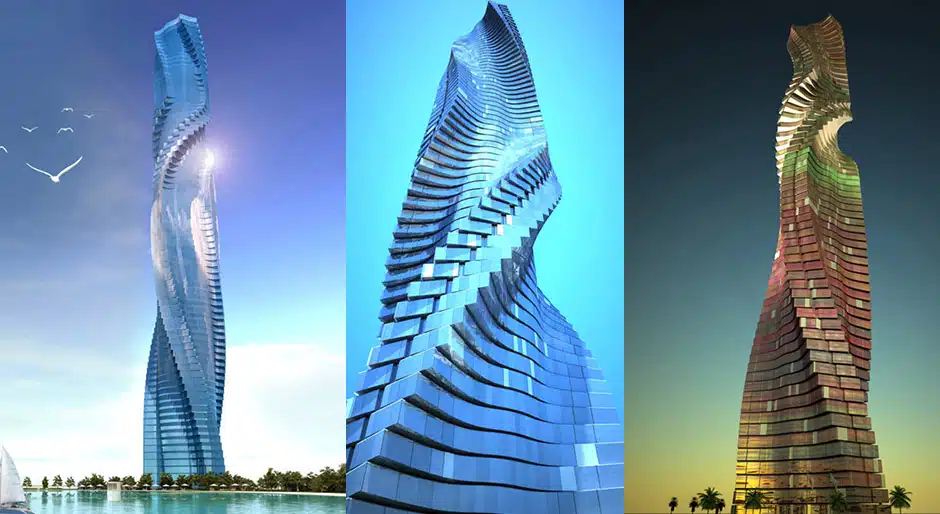NYC creating curvy skyscrapers, Dubai building twirling skyscrapers
Last year, architects were designing skinnier and skinnier skyscrapers to curvy skyscrapers for the Manhattan skyline. Again, architectural design goes further.
Dubai, already known for accomplishing the world’s largest properties (world’s largest man-made island, the world’s largest shopping mall, the world’s tallest building), is now planning to build the world’s first rotating skyscraper.
Designed by David Fisher of Dynamic Architecture envisions, it will be 80 stories and 1,273 feet tall with floors that can rotate 360 degrees in both directions. It will be called the Dynamic Tower. It is estimated to cost $1.2 billion.
Residents will be able to control the direction and speed of rotation of their individual floors.
Plans for the 80-story residential building were first announced in 2008. According to media reports and Dynamic Architecture, the tower is scheduled for completion in 2020; however, there has been no official announcement of the building site. When completed it will be the third-tallest building in Dubai.
The Dynamic Tower will also generate its own energy through 79 wind turbines placed between each floor, as well as solar paneling.
The project comes weeks after Dubai opened the world’s tallest hotel in the United Arab Emirates. The Gevora Hotel totals 75 floors with 528 rooms, beating the JW Marriott Marquis, which is a meter shorter and was formerly the world’s tallest hotel.
And recently, Emaar Properties released photos of Dubai’s upcoming world’s new tallest tower, Dubai Creek Tower. Currently, the world’s tallest building is the Burj Khalifa in Dubai, which has been the tallest structure in the world since its topping out in late 2008.
The $1 billion observation tower is expected to be completed in 2020. At the top will be an oval-shaped bud, housing 10 observation decks, including The Pinnacle Room, which will offer 360-degree views of the city. Fugro, a Dutch multinational company that provides geo-technical and survey services, completed the testing for the 3,045-foot structure in January.
The total built-up area of the mall is expected to be approximately 32 million square feet, with 18 million square feet of retail, 5.9 million square feet of residential, 1.94 million square feet of commercial, a 1.88 million-square-foot basement, and a 430,000-square-foot hotel. By comparison, the world’s current largest mall – Emaar’s Dubai Mall – has a total area of 12 million square feet.
Emaar is currently receiving bids for contract to build the structure.

